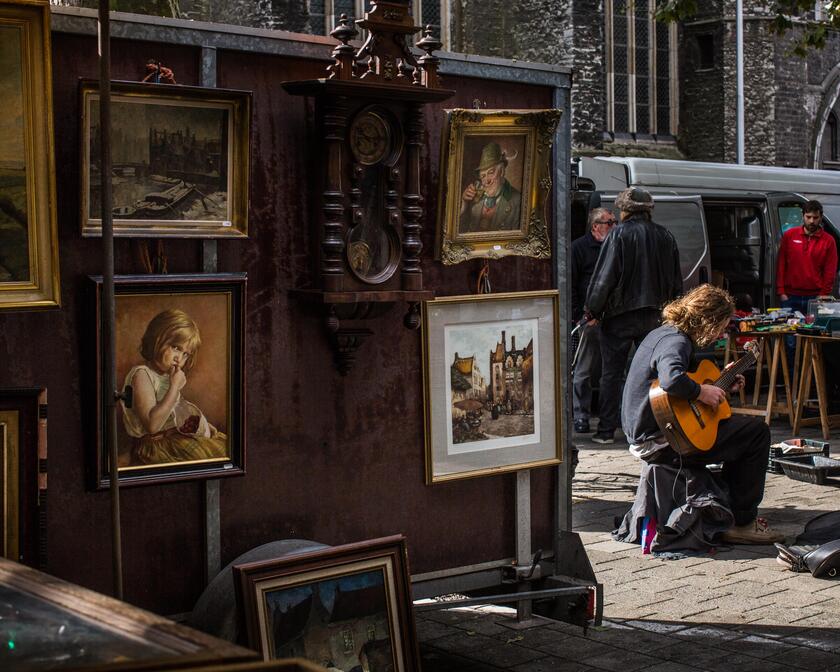Flea market at Bij Sint-Jacobs


Bij Sint-Jacobs, the popular square around the stately St James’ Church, has been the centre of the Ghent Festivities for decades. This was where the festivities were given a new lease of life in 1969 at Café Trefpunt, by the folk singer Walter De Buck. An old Ghent tradition was reborn. What started out as a small affair among artists around St James’ has grown into an event that takes over the entire city centre, thanks to support from Ghent city council. The ten-day, non-stop party is packed with folklore, street theatre, puppet shows, and music, and has now grown into one of the biggest street parties in Europe!
Before and after the Ghent Festivities, the local atmosphere is never far away at Bij Sint-Jacobs. Every Friday, Saturday and Sunday morning, this lively square is taken over by trinkets, baubles, small antiques and old junk. The flea market is a real Ghent tradition. And the market is so firmly rooted in Ghent culture that a whole host of vintage and curiosity shops have moved into the streets around the Romanesque church of St James, beside the famous antiques gallery, Gallery St-John. Bij Sint-Jacobs is the absolute place to be for collectors!
The mighty St James’ Church stands in the middle of the square. A rough, Romanesque fortress of God. Its imposing architecture, dating back to the 12th century, may be the reason that this old church is still standing. It has survived desecrations and an iconoclasm. It has been damaged, scarred and then repaired, restored and extended time and again. That has led to an interesting mixture of styles. The architecture is Romanesque with Gothic and Baroque elements. It is a genuinely remarkable piece of religious architecture.